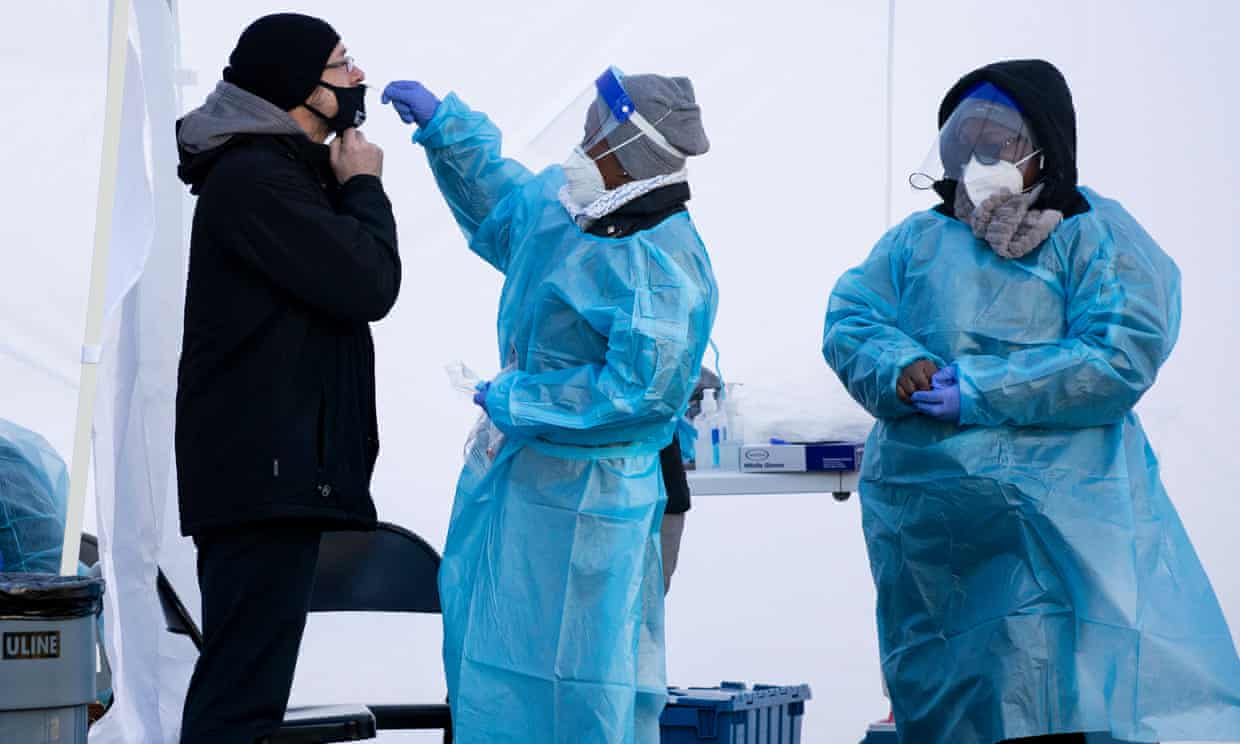In the fourth year of the pandemic, Covid-19 is once again spreading across America and being driven by the recent holidays, fewer precautions and the continuing evolution of Omicron subvariants of the virus.
New sub-variants are causing concern for their increased transmissibility and ability to evade some antibodies, but the same tools continue to curtail the spread of Covid, especially bivalent boosters, masks, ventilation, antivirals and other precautions, experts said.
Yet booster uptake has been “pitiful”, said Neil Sehgal, an assistant professor of health policy and management at the University of Maryland School of Public Health. Antiviral uptake has been low, and few mandates on masking, vaccination and testing have resumed in the face of the winter surge, which is once again putting pressure on health systems.
New Covid hospital admissions are now at the fourth-highest rate of the pandemic, according to the US Centers for Disease Control and Prevention (CDC). Covid hospitalizations declined somewhat after the summer wave, but never dropped to the low levels seen after previous spikes, persisting through the fall and rising again with the winter holidays.
“Hospitals are at maximum capacity,” said Brendan Williams, president and CEO of the New Hampshire Health Care Association, of his region’s current rates. “I’m not sure what the trajectory of this thing’s going to be, but I am worried.”
The majority of Covid hospitalizations are among those 65 and older, although the share for children under four roughly doubled in 2022.
In the past week, Covid deaths rose by 44%, from 2,705 in the week ending 4 January to 3,907 in the week ending 11 January.
This is one of the greatest surges of Covid cases in the entire pandemic, according to wastewater analyses of the virus. It’s much lower than the peak in January 2022, but similar to the summer 2022 surge, which was the second biggest.
And it’s not done yet. “Certainly it does not appear that we are peaking yet,” Sehgal said.
The Omicron subvariants BQ.1.1 and BQ.1 as well as the quickly expanding XBB.1.5 make up the majority of cases, according to CDC estimates. The north-east, where more than 80% of cases are estimated to be from the XBB.1.5 subvariant, has the highest proportion of cases, according to wastewater data.
“With XBB, there’s such a significant transmission advantage that exposure is really risky – it’s riskier now than it’s ever been” in terms of transmissibility, Sehgal said.
Official case counts have been slower to rise, because of the prevalence of at-home tests and because of a general reluctance to test at all, experts say. Of the tests that are reported, however, positivity rates have been very high, with about one in six tests (16%) turning positive.
Despite the high rates of Covid spread, hospitalizations have not yet reached previous peaks seen earlier in the pandemic, probably due to immunity from vaccinations and prior cases, said Stuart Ray, a professor of medicine and infectious diseases at the Johns Hopkins University School of Medicine.
But that protection should not be taken for granted, he said, particularly because immunity wanes.
‘People aren’t taking this seriously’: experts say US Covid surge is big risk




